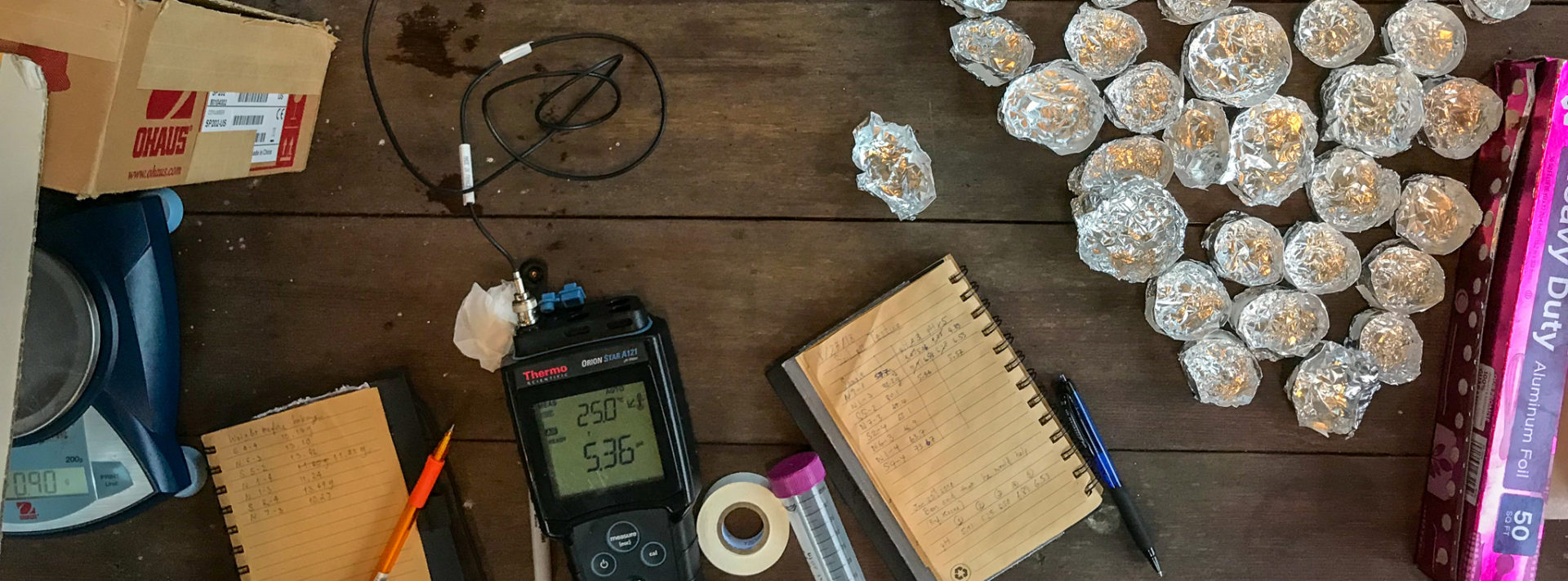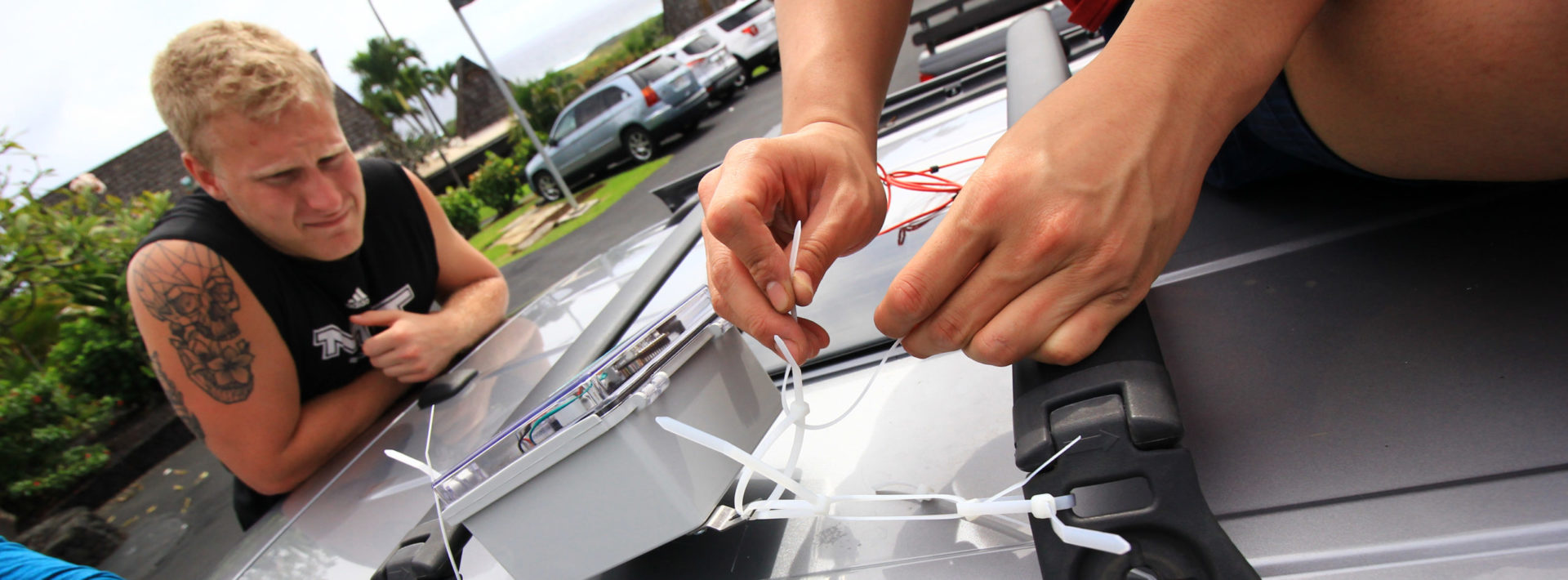TREX Day 7: Milkshake and “brownies”

By James Pruegsanusak ’19
Ju, Joey and I planned to go to collect more soil samples and fly a couple flights at Mr. Ha’s farm in Pepeekeo today. Before we left the house, Prof Ben Kocar finished up attaching the $2k FLIR thermal camera to our drone, Iceman. Planning to put sensors on buildings along the coast of the island, the other group marked potential locations and called them to ask for permission.

David and Meghan calling businesses, libraries, fire stations, etc. to ask if we could put on our PM sensors.

Prof Ben Kocar connecting the thermal camera on to the drone.
On the way to the farm, the weather was not very promising. It was raining so hard that Ben said our car was like a boat floating down a stream of water. We traveled through a “scenic route,” where the two sides of the road were tropical forest. When Ben called Mr. Ha, he said there was lightning over there, so we decided it was too dangerous to collect soil samples, let alone flying the drone, and stopped by “What’s Shakin!” for milkshakes instead.
 Rain, rain, rain.
Rain, rain, rain.

Ju and Joey getting Hawaiian milkshakes.
Getting back to the house in the afternoon, we worked on soil analyses on 36 Ziploc bags of soil that the other groups collected the day before. To measure pH, we mixed soil and water in 1 to 2 ratio by weight, aiming for about 50-100 grams of soil. The two pH probes we used the other day seemed to always have around 0.2 difference in their measurements, so we tested with the other three probes. Surprisingly, these three measurements also disagreed with the first two. Soil is usually a good buffer so large variations in pH are not expected. We used the third and fifth probes because their values were in the middle of all.

Soil analyses: measuring pH and moisture content.
For water/moisture content measurement, we used aluminum foil to make little containers for 10-20 grams of soil, which would be put into an oven to bake. Comparing the weights before and after baking will give the amount of water in each soil sample. While the conditions here aren’t ideal (lowest oven temperature settings too high, air humidity too high), this should work out well for preliminary analysis. These soil samples will be analyzed again back in a lab at MIT where we have a more controlled environment.

Soil “brownies” ready to be baked. We put them in the oven overnight.

1-to-2 soil and water mixtures for pH measurement. After large particles precipitate, we can see that different samples have different compositions of large and small particles.

Corn sample from location 4 of the South field. We measured the length and circumference of the corn, with and without the covering leaves.
In addition to the mentioned analyses, we’ll have to work on measuring the nutrient concentration in the soil samples later. Ju kindly cooked dinner for us, and Ben also joined!
Every year, a group of MIT students and professors travel to the Big Island of Hawaii to gain fieldwork experience through TREX (Traveling Research Environmental EXperiences). The first TREX trip was held in 2000, and since launching has taken students on research activities in domestic and international settings. For more undergraduate opportunities, click here.



